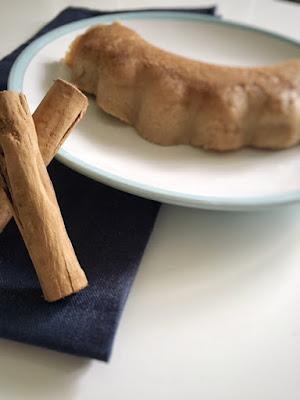I will preface this by saying that this is quite possibly my
favourite Greek dessert, and one that I make on a regular basis.
In Greece, there are a few Halva products/cakes and they are
all quite different. I have made the semolina based Halva, Χαλβάς
σιμιγδαλένιος, but there is also the Sesame/Tahini Halva, Χαλβάς με ταχίνι (if
you live in Greece or have access to a Greek market, this is mostly sold during
periods of fasting i.e. before Easter), and a flour based Halva, Χαλβάς
κουταλιού.
When my sister and I were
children and would visit my grandmother’s sister in Lefkada, she would always
offer us this dessert; in fact, because it uses simple ingredients (oil, flour,
sugar and water) it is one of the most common desserts found in traditional
homes.
 |
| these are not my own pics-they are taken from Google images |
To the dismay of my mom and everyone else I know who always
use the traditional 1:2:3:4 method, this recipe does not follow that AT ALL. If
you aren’t familiar with the traditional method, or you haven’t got a clue what
I’m talking about, I’ll summarise: traditionally, semolina halva is made with 1
part oil, 2 parts semolina, 3 parts sugar, and 4 parts water.
As you will see, the recipe (which was given to me by my Aunt) varies: it uses milk instead of
water, because it gives the cake more taste and it makes it αφράτο,
and the measurements do not follow the simple ratio. Nevertheless, I think this version of halva is tastier, and I’ve never had anyone say otherwise.
By the way, if you are fasting from dairy, just substitute the milk for water. And if you prefer butter to vegetable oil, use that instead.
Greek Halva, or
Semolina Cake, or χαλβάς σιμιγδαλένιος
Ingredients
1 cup coarse Semolina
½ cup Vegetable Oil or Unsalted Butter
1 cup Sugar
2 ½ cups Water or Whole Milk
1 tsp Vanilla
Method
1. In a saucepan, add the milk and sugar. Heat up on low/medium
heat until the sugar dissolves and the milk is simmering. Turn off the heat, add
the vanilla and stir. [But make sure the milk remains warm]
2. In a large pan (I used a frying pan), heat the oil on med/high
heat. Then add the semolina—at first it will bubble, but it should soak up all
the oil fairly quickly. Stir the semolina constantly so it doesn’t burn. The
objective is to toast/stir until golden. Make sure you don’t burn it! There is a fine line between golden semolina
and burnt, and you definitely do not want a burnt, bitter semolina for this
cake.
3. Once the semolina is golden, turn down the heat to low.
Now you will slowly add the milk mixture. Many
recipes tell you to add it all at once; DO NOT DO THAT. You should be adding
your milk spoonful, by spoonful. The reasons are twofold: you avoid setting off
the smoke alarm (adding liquid to a hot frying pan=instant heat/smoke), and it
gives the semolina a chance to soak up all the milk and cook.
4. Once you have used up all your milk, and the semolina is a
thick mixture, remove from the heat and pour into a mould. I used a cake mould,
but I have also used individual pudding bowls/ramekins before. It really is up
to you.
5. At this point you can either wait until it has cooled,
which I never do, or eat as is. The finishing touch is to turn over your mould
onto a cake platter, garnish with cinnamon and toasted almonds (if you have
them), and eat.
ENJOY!
 |
| Don't worry about the cracks- It gives the cake character |









No comments:
Post a Comment